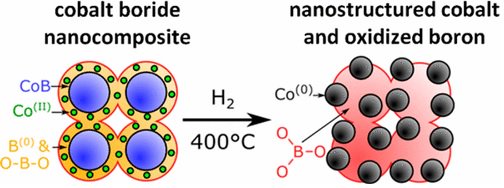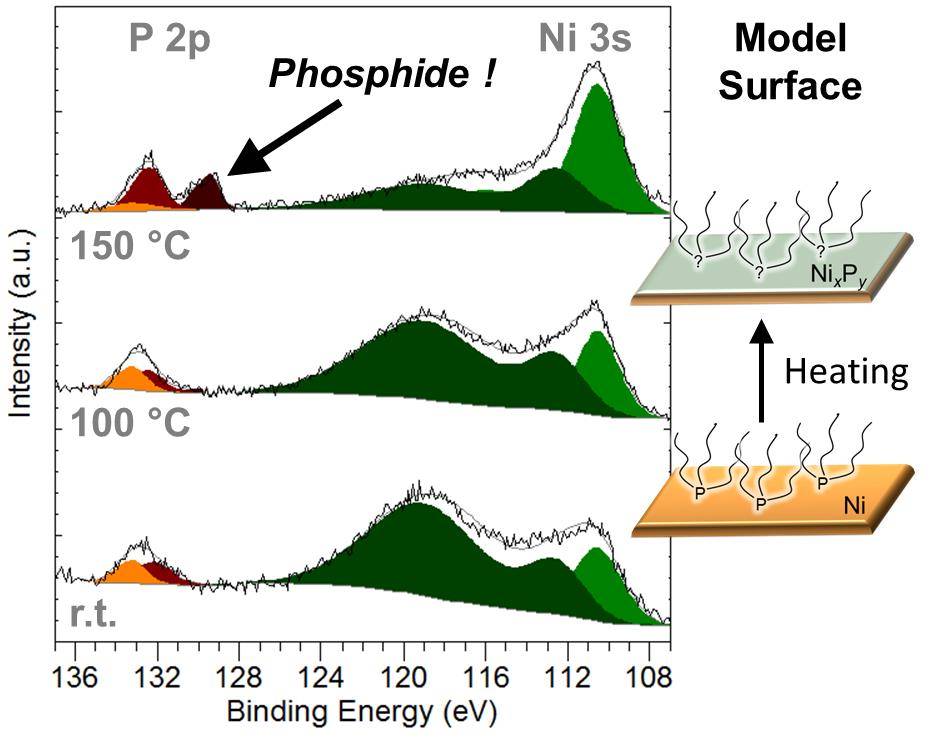Publications
| 2025 (2) | |||
| 2024 (7) | 2023 (5) | 2022 (3) | 2021 (5) |
| 2020 (3) | 2019 (12) | 2018 (5) | 2017 (3) |
| 2016 (4) | 2015 (2) | 2014 (4) | 2013 (7) |
| 2012 (7) | 2011 (1) | 2010 (2) | 2008 (1) |
2017 | Articles and Reviews
Synthesis of Ce2O2S and Gd2(1– y)Ce2yO2S Nanoparticles and Reactivity from in Situ X-ray Absorption Spectroscopy and X-ray Photoelectron Spectroscopy
|
C. Larquet, A.-M. Nguyen, M. Ávila-Gutiérrez, L. Tinat, B. Lassalle-Kaiser, J.-J. Gallet, F. Bournel, A. Gauzzi, C. Sanchez, S. Carenco, Inorg. Chem. 2017, 22, 14227-14236 |
In Situ Solid-Gas Reactivity of Nanoscaled Metal Borides from Molten Salt Synthesis
|
Our study about cobalt boride nanoparticles, led by David Portehault, uses Near-Ambient-Pressure XPS to monitor the behavior of this CO2 methanation catalyst. We uncovered that the crystalline structure is not stable in reducing conditions and evolves to metallic cobalt and boron oxide. This surprising result was confirmed by NEXAFS measurements and additional characterizations. |
 |
|
G. Gouget, D. P. Debecker, A. Kim, G. Olivieri, J.-J. Gallet, F. Bournel, C. Thomas, O. Ersen, S. Moldovan, C. Sanchez, S. Carenco, D. Portehault. Inorg. Chem. 2017, 56, 9225–9234 |
The Birth of Nickel Phosphides Catalysts: Monitoring Phosphorus Insertion into Nickel
|
S. Carenco, Z. Liu, M. Salmeron, ChemCatChem 2017, 9, 2318–2323 |






